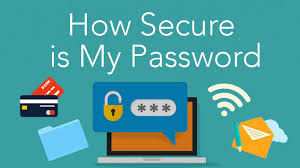Search for answers or browse our knowledge base.
How-To Create Strong Passwords

A strong password is an important protection to help you have safer online transactions. Here are steps you can take to create a strong password. Some or all might help protect your online transactions.
Length: Make your passwords long with eight or more characters.
Complexity: Include letters, punctuation, symbols, and numbers. Use the entire keyboard, not just the letters and characters you use or see most often. The greater the variety of characters in your password, the better. However, password hacking software automatically checks for common letter-to-symbol conversions, such as changing “and” to “&” or “to” to “2” etc…
Variation: To keep strong passwords effective, change them often. Set an automatic reminder for yourself to change your passwords on your e-mail, banking, and credit card websites about every three months.
Variety: Don’t use the same password for everything. Cyber criminals will steal passwords on websites that have very little security, and then they use that same password and user name in more secure environments, such as banking websites.
There are many ways to create a long, complex password.
Here are some suggestions that might help you remember it easily:
What to do | Example |
Start with a sentence or two. | Complex passwords are safer. |
Remove the spaces between the words in the sentence. | Complexpasswordsaresafer |
Turn words into shorthand or intentionally misspell a word. | ComplekspasswordsRsafer |
Substitute numbers and other characters for letters | C0mpl3k5p@55w0rd5R5@f3r |
More strategies for strong passwords:
Test your password with a password checker. A password checker evaluates your password’s strength automatically. Try out your new password here: secure password checker.
Avoid common password pitfalls:
Cyber criminals use sophisticated tools that can rapidly decipher passwords.
Avoid creating passwords that use:
- Dictionary words in any language.
- Words spelled backwards, common misspellings, and abbreviations.
- Sequences or repeated characters. Examples: 12345678, 222222, abcdefg, or adjacent letters on your keyboard (qwerty).
- Personal information. Your name, birthday, driver’s license, passport number, or similar information.
Need help in creating secure passwords? You can also use a random password generator. As there are many sites that will generate passwords for you, consequently you want to make sure you are selecting a verity of characters.
Article from Microsoft Safety & Security Center
